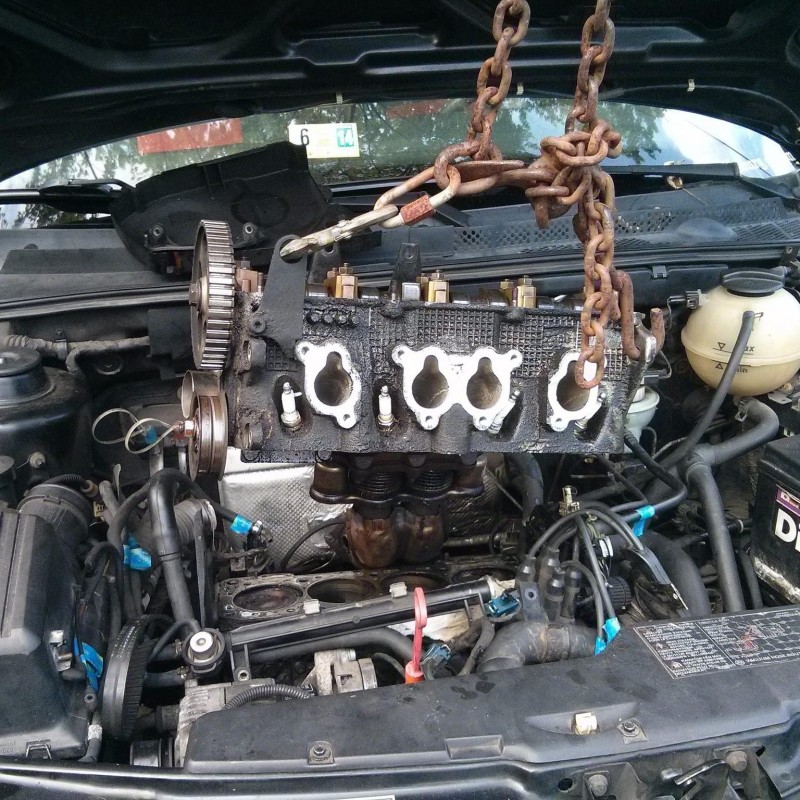A low engine oil level can have serious consequences for your vehicle’s performance and longevity. Engine oil plays a crucial role in keeping the moving parts of the engine lubricated, reducing friction, and preventing wear. When the oil level drops below the optimal range, the engine may struggle to function efficiently, leading to various issues that can escalate into significant damage. Many car owners may overlook this critical component of vehicle maintenance, but understanding the signs of low engine oil, the potential risks, and how to deal with it is essential for all vehicle owners.
In this comprehensive guide, we will examine the causes and consequences of low engine oil levels, how to check oil levels, maintenance tips to prevent depletion, and what to do if you find yourself with low oil. Armed with this knowledge, you can protect your engine and ensure that your vehicle performs optimally for years to come.
The Role of Engine Oil
To appreciate the impact of low engine oil levels, it’s essential to understand the vital functions engine oil serves within a vehicle. Engine oil is responsible for the following key elements:
Lubrication
- Reducing Friction: Engine oil provides lubrication to the engine’s moving parts, reducing friction between components. This lubrication minimizes wear and tear, allowing the engine to operate smoothly.
- Heat Dissipation: In addition to lubrication, oil helps dissipate heat generated by engine operation. It absorbs excess heat and carries it away from critical components, preventing overheating.
Contaminant Removal
- Trap Debris: Over time, engine oil accumulates dirt, metal particles, and other contaminants. The oil filter prevents these particles from circulating in the engine, ensuring cleaner operation.
- Sludge Prevention: Regular oil changes help prevent sludge formation, a thick, varnish-like substance that can impede oil flow and damage engine components.
Sealing and Compression
- Creating a Seal: Engine oil helps create a seal between the cylinder walls and the piston rings, maintaining compression and optimizing engine performance.
- Reducing Engine Noise: The presence of oil in the engine also reduces operational noise, contributing to a smoother, quieter running engine.
Understanding these functions underscores the critical role that engine oil plays in vehicle performance and reinforces why maintaining proper oil levels is so important.
Causes of Low Engine Oil Level
Several factors can contribute to low engine oil levels in a vehicle. Recognizing these causes will help you identify potential problems before they escalate.
Oil Leaks
- Common Leak Points: Oil leaks may occur at various points within the engine, including gaskets, seals, or even the oil pan. Wear and tear over time can cause these components to fail.
- Diagnosing Leaks: Regularly inspect the ground beneath your vehicle for oil stains or puddles. Checking oil levels frequently can help identify leaks early.
Oil Consumption
- Normal Consumption: All engines consume oil to some degree, and it is typically normal for older engines to require more frequent top-offs.
- Excessive Consumption: If you find yourself regularly needing to add oil, it could indicate an underlying problem, such as worn piston rings or valve seals.
Poor Maintenance Practices
- Neglecting Oil Changes: Failing to change the oil at recommended intervals can result in the accumulation of contaminants, leading to premature oil breakdown and depletion.
- Using Improper Oil: Using the wrong type of oil or improperly formulated oil for your engine can lead to increased consumption or loss of effectiveness.
Engine Wear
- Wear and Tear: As engines age, parts may begin to wear out, leading to increased oil consumption or leaks.
- Signs of Aging: Be attentive to engine wear signs, such as decreased performance or unusual noises, as these can indicate that your engine requires further inspection.
Identifying the causes of low engine oil levels can help you address issues promptly and maintain the health of your engine.
Symptoms of Low Engine Oil Level
Being aware of the symptoms that accompany low engine oil levels is vital for prompt action. Here are some indicators that suggest your engine may be low on oil:
Dashboard Warning Lights
- Oil Pressure Warning Light: Many vehicles have an oil pressure warning light on the dashboard. If this light illuminates, it may indicate low oil levels or pressure, necessitating immediate attention.
- Check Engine Light: A warning light may not directly indicate low oil, but it can signify engine issues linked to oil-related problems, requiring careful evaluation.
Engine Performance Issues
- Unusual Engine Noises: Low oil levels can lead to increased friction, causing knocking or tapping noises from the engine. If you hear any unusual sounds, it may be time to check your oil level.
- Rough Idling: If your vehicle is idling roughly or experiencing jerky acceleration, it can be a sign of insufficient oil flow.
Overheating Engine
- Temperature Gauge: If you notice the engine temperature gauge rising above the normal operating range, it often indicates that the oil level is low and inadequate for cooling.
- Steam from Under the Hood: In severe cases, low oil can lead to overheating, resulting in steam or smoke coming from the engine bay. This requires immediate action to prevent further damage.
Increased Oil Consumption
- Frequent Top-Ups: If you find yourself constantly adding oil, it may be an indicator of low oil levels and potential leaks or excessive consumption due to wear.
- Oil Stains: Check underneath your vehicle for any signs of oil puddles or stains; this could signal leakage that correlates with low oil levels.
Recognizing these symptoms will enable you to take action before further problems develop, maintaining the health of your vehicle.
Checking Your Engine Oil Level
Routine checks of the engine oil level are essential for ensuring it remains within the appropriate range. Here are the steps for effectively checking the oil level in your vehicle:
Gather Necessary Tools
- Dipstick: Most vehicles come equipped with a dipstick for checking oil levels. Familiarize yourself with its location in your engine compartment.
- Appropriate Rags: Have clean rags or paper towels handy for wiping the dipstick and cleaning up any potential spills.
Preparing for the Check
- Warm-Up the Engine: Start your vehicle and let it run for a few minutes to warm up. This allows the oil to circulate and settle in the oil pan.
- Securely Park the Vehicle: Turn off the engine and park on a level surface. This ensures an accurate reading when you check the oil level.
Performing the Oil Level Check
- Remove the Dipstick: Pull the dipstick out and wipe it clean with a rag. Insert it back into the dipstick tube, ensuring it’s fully seated.
- Check the Oil Level: Remove the dipstick once again and observe the oil level against the markings on the stick. The oil should be between the “Full” and “Add” marks.
- Assess Oil Condition: While checking the level, pay attention to the oil’s color and consistency. Fresh oil is typically amber, while old oil can appear dark and gritty. If it looks dirty, it might be time for an oil change.
Adding Oil if Necessary
- Determine Oil Type: If the oil level is low, determine the correct type of oil to add according to the manufacturer’s specifications.
- Pour Oil Carefully: Use a funnel to pour oil into the engine slowly. Avoid overfilling, and check the level periodically until it reaches the appropriate mark.
By establishing a routine of checking your engine oil level, you can catch any potential issues early on and ensure optimal performance.
Regular Maintenance for Engine Health
In addition to monitoring oil levels, routine maintenance practices significantly impact engine health, especially in relation to oil management. Below are some best practices to consider:
Scheduled Oil Changes
- Follow Manufacturer Guidelines: Adhere to the oil change intervals specified in your vehicle’s owner manual. Most modern vehicles recommend changing oil every 5,000 to 7,500 miles, but this may vary based on driving conditions.
- Consider Your Driving Style: If you drive under severe conditions—such as frequent short trips, towing, or extreme temperatures—you may need to change your oil more frequently.
Regular Fluid Checks
- Monitor Other Fluids: In addition to oil, regularly check other vital fluids like the coolant, brake fluid, and transmission fluid, as they are crucial for your vehicle’s overall performance.
- Addressing Leaks Promptly: If you notice any leaks, address them immediately. Flushing systems and replacing fluids as necessary will keep your vehicle in prime condition.
Inspection of Parts
- Inspect Filters: Regularly check the oil filter when changing the oil. Replacing the filter helps maintain optimal performance of the engine’s lubrication system.
- Look for Wear in Components: Regularly assessing your vehicle’s belts, hoses, and other components can prevent issues that may contribute to low engine oil levels over time.
Driving Habits
- Gentle Start: Start your engine gently rather than revving it immediately. Gentle operation allows oil to circulate gradually, preventing wear.
- Avoid Harsh Driving: Avoid aggressive acceleration and braking. Gentle driving helps maintain the integrity of the engine, including the oil system.
Adopting these maintenance practices not only prolongs the life of your engine and its components but also plays a role in preventing low engine oil level due to leaks or consumption issues.
When to Seek Professional Help
While many aspects of oil maintenance can be handled independently, there are circumstances where seeking professional assistance can be beneficial. Here are a few instances to consider:
Advanced Diagnosis
- Persistent Warning Lights: If dashboard warning lights related to oil pressure or performance remain illuminated after addressing low oil, it’s advisable to consult a mechanic for further diagnosis.
- Unusual Performance Issues: Any persistent engine noises, rough idling, or significant power loss may indicate underlying problems requiring professional intervention.
Specialized Repairs
- Oil System Issues: If you suspect problems related to the oil pump, filter integrity, or leaks that you cannot identify, bringing your vehicle to a professional can help resolve these issues.
- Engine Overhaul: Should your engine require significant repairs due to wear from low oil levels, a professional mechanic will have the expertise and tools necessary for a proper overhaul.
Regular Maintenance Services
- Routine Services: Scheduling regular maintenance with a professional service can help keep your vehicle in optimal condition, including inspections for oil levels and overall performance.
- Seasonal Inspections: Consider having your vehicle inspected seasonally before trips or long drives, especially if you encounter significant changes in driving conditions.
Being aware of when to seek professional help can save you time and money while ensuring your vehicle remains in prime operating condition.
Conclusion
Recognizing how often to change motorcycle oil, understanding the implications of low engine oil levels, and knowing when to perform maintenance are vital elements of responsible vehicle ownership. The interplay between engine health and oil management cannot be overstated, as it directly affects performance, fuel efficiency, and safety.
By familiarizing yourself with the signs of low engine oil, the necessary maintenance tasks, and the importance of regular inspections, you can take proactive steps to support your vehicle’s durability and function. Additionally, understanding when to follow up with professional help will provide peace of mind as you navigate the road.
As you engage in the responsibilities of maintaining your motorcycle, embrace the knowledge that comes with it. Establishing these habits will ensure you can enjoy every ride with confidence in your vehicle’s health and functionality, creating a safer and more rewarding experience on the road.
Tags: automotive maintenance tips, driving safety, low engine oil level, Vehicle Care